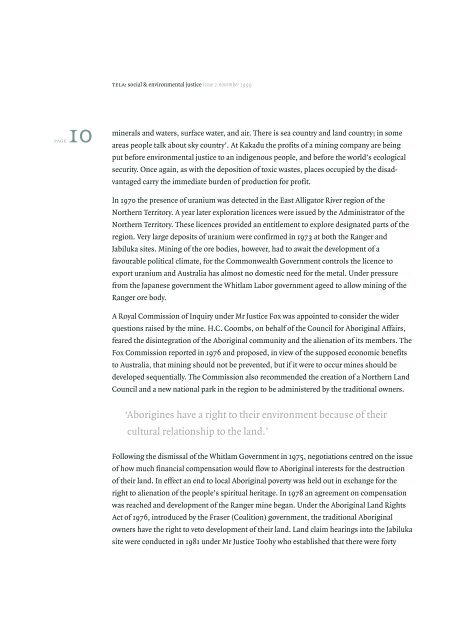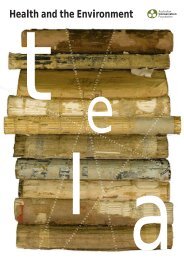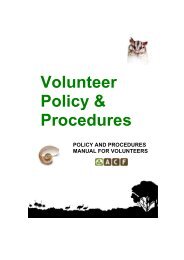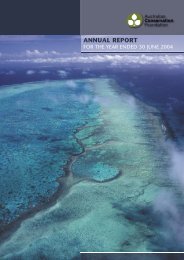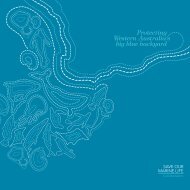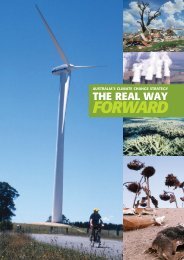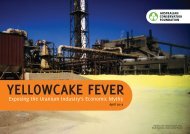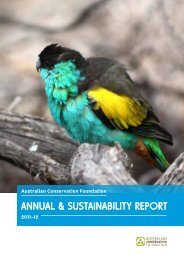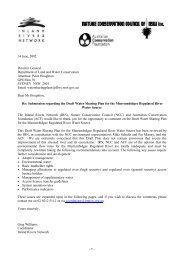Social & Environmental Justice - Australian Conservation Foundation
Social & Environmental Justice - Australian Conservation Foundation
Social & Environmental Justice - Australian Conservation Foundation
- No tags were found...
You also want an ePaper? Increase the reach of your titles
YUMPU automatically turns print PDFs into web optimized ePapers that Google loves.
tela: social & environmental justice issue 2 november 1999page10minerals and waters, surface water, and air. There is sea country and land country; in someareas people talk about sky country’. At Kakadu the profits of a mining company are beingput before environmental justice to an indigenous people, and before the world’s ecologicalsecurity. Once again, as with the deposition of toxic wastes, places occupied by the disadvantagedcarry the immediate burden of production for profit.In 1970 the presence of uranium was detected in the East Alligator River region of theNorthern Territory. A year later exploration licences were issued by the Administrator of theNorthern Territory. These licences provided an entitlement to explore designated parts of theregion. Very large deposits of uranium were confirmed in 1973 at both the Ranger andJabiluka sites. Mining of the ore bodies, however, had to await the development of afavourable political climate, for the Commonwealth Government controls the licence toexport uranium and Australia has almost no domestic need for the metal. Under pressurefrom the Japanese government the Whitlam Labor government ageed to allow mining of theRanger ore body.A Royal Commission of Inquiry under Mr <strong>Justice</strong> Fox was appointed to consider the widerquestions raised by the mine. H.C. Coombs, on behalf of the Council for Aboriginal Affairs,feared the disintegration of the Aboriginal community and the alienation of its members. TheFox Commission reported in 1976 and proposed, in view of the supposed economic benefitsto Australia, that mining should not be prevented, but if it were to occur mines should bedeveloped sequentially. The Commission also recommended the creation of a Northern LandCouncil and a new national park in the region to be administered by the traditional owners.‘Aborigines have a right to their environment because of theircultural relationship to the land.’Following the dismissal of the Whitlam Government in 1975, negotiations centred on the issueof how much financial compensation would flow to Aboriginal interests for the destructionof their land. In effect an end to local Aboriginal poverty was held out in exchange for theright to alienation of the people’s spiritual heritage. In 1978 an agreement on compensationwas reached and development of the Ranger mine began. Under the Aboriginal Land RightsAct of 1976, introduced by the Fraser (Coalition) government, the traditional Aboriginalowners have the right to veto development of their land. Land claim hearings into the Jabilukasite were conducted in 1981 under Mr <strong>Justice</strong> Toohy who established that there were forty


